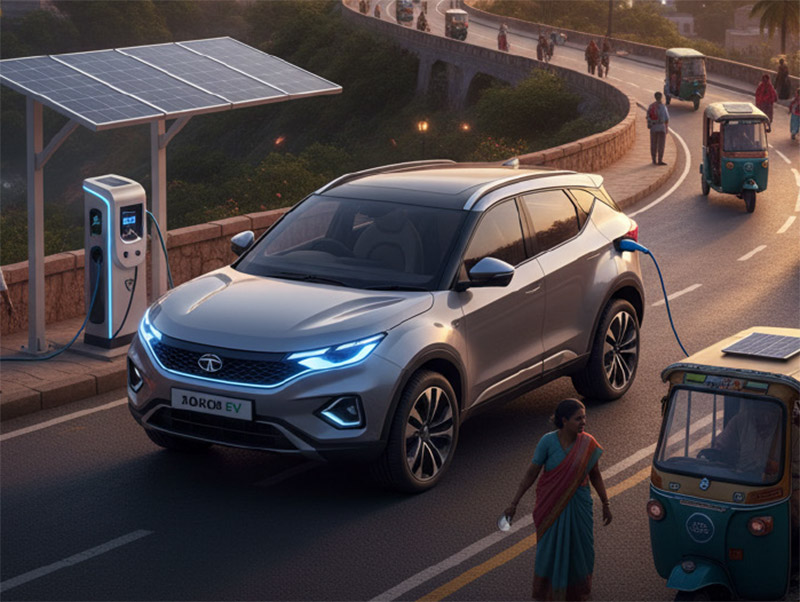Blitz Bureau
NEW DELHI: India’s electric vehicle (EV) market is no longer a niche segment — it is rapidly becoming a cornerstone of the country’s mobility revolution. Projections suggest that by 2029, India’s EV market could reach $110.7 billion, driven by Government incentives, growing consumer awareness, and advances in battery technology.
For investors, manufacturers, and policymakers, the question is no longer if India will embrace electric mobility, but how quickly it can scale and capture global supply-chain opportunities.
Government support has been pivotal in this growth story. Schemes such as the Faster Adoption and Manufacturing of Electric Vehicles (Fame) and Production Linked Incentive (PLI) programmes have provided financial incentives, boosted infrastructure development, and encouraged domestic manufacturing of batteries and EV components.
Finance Minister Nirmala Sitharaman recently noted, “Our policies aim not only to promote adoption but also to build a robust domestic EV ecosystem, reducing reliance on imports and generating jobs.” Consumer demand, especially among urban millennials and environmentally conscious buyers, is another key driver.
With rising fuel costs and the promise of lower running costs, EV adoption is picking up in metro areas. Automotive companies, from traditional players like Tata Motors and Mahindra to start-ups like Ola Electric, are racing to meet this demand with new models, improved range, and faster charging solutions.
Battery technology and charging infrastructure remain the critical bottlenecks. Lithium-ion battery costs, though falling, still account for a large portion of EV prices. Public and private investment in charging stations is essential for consumer confidence. Piyush Goyal, Commerce Minister, has emphasised, “A widespread charging network is as critical as the vehicles themselves; it is the backbone of a sustainable EV ecosystem.”
The EV sector’s growth also signals opportunities beyond passenger vehicles. Electric buses, two-wheelers, and commercial vehicles are gaining traction, especially in public transport and last-mile logistics. Companies investing early in supply chains, battery recycling, and software-driven mobility solutions are positioning themselves to capture long-term value. Analysts at ICRA point out that “India’s EV ecosystem is poised for exponential growth, but companies that focus on total lifecycle solutions — charging, battery management, and fleet services — will lead the market.”
However, challenges remain. Policy consistency, raw material sourcing, and grid capacity are key concerns. India depends on imports for lithium and cobalt, and global price volatility can impact costs. Additionally, urban charging infrastructure must keep pace with vehicle adoption to prevent bottlenecks. Strong collaboration between private industry, state governments, and research institutions will be essential to address these gaps.
India is on a fast track to becoming a global EV hub. For businesses, the message is simple — invest, innovate, and integrate. For policymakers, the task is to sustain incentives, expand infrastructure, and support domestic manufacturing. For consumers, EVs offer an increasingly viable and eco-friendly alternative to traditional vehicles.
India’s EV market is not just about cleaner transport — it offers immense opportunity for technology, manufacturing, and investment. As the world moves towards sustainable mobility, India appears well-positioned to drive the next phase of automotive evolution and potentially emerge as a key global exporter of electric vehicles and components.



